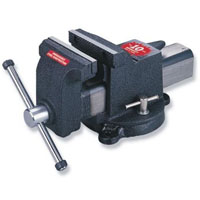 Any home workshop, in our opinion, should have not only a large set of hand and power tools, but also a couple of small machines, as well as stationary fixtures. One such device is a vise. This tool is designed to fix the workpiece in a stationary state, for greater convenience. Depending on the size of the part and its material, the vise comes in a variety of types.
Any home workshop, in our opinion, should have not only a large set of hand and power tools, but also a couple of small machines, as well as stationary fixtures. One such device is a vise. This tool is designed to fix the workpiece in a stationary state, for greater convenience. Depending on the size of the part and its material, the vise comes in a variety of types.
The largest vices are used in forges and are called chair vices. Smaller vices are called parallel vices, they are most common among ordinary citizens in garages and home workshops. For people who need to process a small part, a hand vise is suitable. In order for you to better understand the variety of locksmith vices, their properties and purpose, we will describe each type separately.
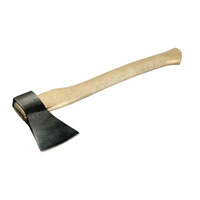 An ax is a hand tool that consists of a steel blade mounted on a handle called an ax handle. With the help of this tool, trees are cut or cleaned of branches and branches. Also in construction with an ax, a very large number of various wood processing works are performed: cutting, planing, sizing, etc.
An ax is a hand tool that consists of a steel blade mounted on a handle called an ax handle. With the help of this tool, trees are cut or cleaned of branches and branches. Also in construction with an ax, a very large number of various wood processing works are performed: cutting, planing, sizing, etc.
At the same time, at the present time there are a large number of types and models of this instrument, which have their own characteristics. We want to talk about all of them in as much detail as possible. Surely this information will not be superfluous to you, both when choosing a tool, and when using those axes that are already in your set.
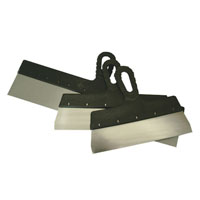 In this article we want to talk about such a simple, but important finishing tool as a spatula. Without it, it is impossible to perform most plastering, painting and other works. Externally, the spatula is a flat, wide steel blade fixed in a plastic or wooden handle. The exception is rubber spatulas.
In this article we want to talk about such a simple, but important finishing tool as a spatula. Without it, it is impossible to perform most plastering, painting and other works. Externally, the spatula is a flat, wide steel blade fixed in a plastic or wooden handle. The exception is rubber spatulas.
Holding the handle with a steel plate, the finishing material is hooked and applied to the wall or work plane. With smooth movements in the future, the applied mass is leveled with a uniform layer. The wider the spatula, the higher the efficiency and the volume of work performed. In the article we will talk about flat spatulas, without affecting the design of angular and curly ones. But now let's dwell on the different types of spatulas in more detail.
1. Plaster spatula. In fact, this is just the classic type of spatula that we talked about above.
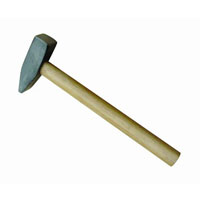 This tool is a massive metal blank, mounted on a handle, which is designed to strike the material or fasteners and create a short-term load of high force. Due to such a load, fasteners (dowels or nails) are driven in, or the material (metal) is bent. This tool is one of the most ancient of those invented by mankind and at present in hardware stores you can find hammers of the most diverse designs, designed for a variety of purposes. Below we want to give a classification of hammers, as well as give photographs of tools and their scope.
This tool is a massive metal blank, mounted on a handle, which is designed to strike the material or fasteners and create a short-term load of high force. Due to such a load, fasteners (dowels or nails) are driven in, or the material (metal) is bent. This tool is one of the most ancient of those invented by mankind and at present in hardware stores you can find hammers of the most diverse designs, designed for a variety of purposes. Below we want to give a classification of hammers, as well as give photographs of tools and their scope.
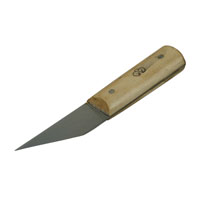 A shoe knife is a very important tool in the household, although I personally encountered it when the mention of this name in a large hardware store caused great surprise on the part of the consultant. He simply did not know anything about this instrument and did not see it with his eyes. In this regard, the author considered it necessary to devote a separate article to this tool without fail.
A shoe knife is a very important tool in the household, although I personally encountered it when the mention of this name in a large hardware store caused great surprise on the part of the consultant. He simply did not know anything about this instrument and did not see it with his eyes. In this regard, the author considered it necessary to devote a separate article to this tool without fail.
A shoe knife is a short thick blade fixed in a wooden, less often plastic handle. The blade length is usually 75 mm and is made of high-strength tool steel. The blade of this knife has a specific beveled shape, as well as a special shape of sharpening. The blade of this knife is sharpened on one side, and the chamfer width reaches 5 mm. Thanks to this design, the knife has great rigidity, and the short length allows cutting with emphasis and applying more force to the blade than other types of construction knives.
Page 2 of 5